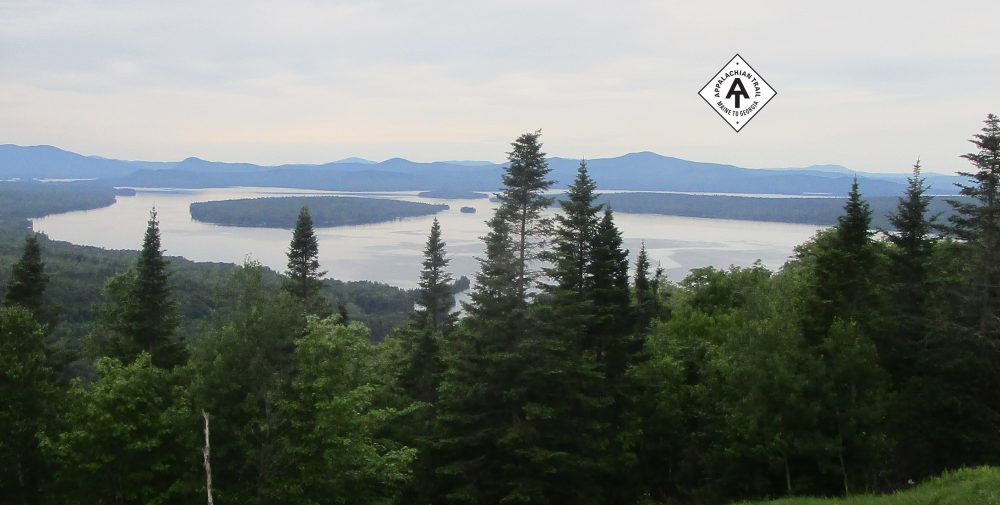When hiking, there is nothing so frustrating and painful as falling. I fell five times within my first 500 miles of hiking on the Appalachian Trail, once almost catastrophically, and rarely do I hike without thinking about the possibility of falling.
Ideally, a hiker will never take his or her eyes off of the ground. A momentary lapse of concentration, the tantalizing need to observe one’s surroundings, the swatting of a fly, the readjustment of one’s glasses, the wiping of sweat off one’s brow—all of these things are but distractions from the ground immediately in front of one’s feet. Most of the time (and under usual circumstances) one can get away with walking during such distractions. You can (and do) take your eyes or your mind off the trail and, more often than not, neither slip, stumble, or lose your balance. But eventually, when your mind is preoccupied, you will place your boot right up against a rock, under a root, or on top of a sloping rock, gravel, or mud, and you will trip or slip. Everyone falls. AT thru-hiker Bill Walker says,
“Falls were one of the more prominent hazards of the trail, and have ruined many a thru-hiker’s dream. They tended to come in three situations:
- When it was wet.
- Late in the day, when you’re tired.
- When you’re in a hurry.”1
I’d add another situation: 4. When you’re good fortune or luck has run out. How many times have you been fortunate, catching yourself after a stumble or slip and averting a fall? So much depends upon the terrain immediately in front of you, and upon the way that you interact with it. I once had the questionable fortune of recovering from a bad stumble by running into a tree.
Naturally, I base my thoughts upon my own experience. Twice I’ve tripped and fallen face first—once into a path of mud. Both times I suffered cuts and abrasions. Twice I’ve slipped on wet rock and have fallen painfully upon my hip. On one of these occasions my trekking pole was beneath me and, though it saved me from further harm, it was irreparably bent out of shape. Both times I was badly bruised. Once I lost my balance and fell down the side of a hill, hitting my forehead against a rock and cutting it severely (resulting in a concussion and stitches), as well as gashing my leg. I was unable to reach help until the next day. It was a life-threatening fall, and I hope never to experience the like of it again. In fact, if I could expect to have another such fall while hiking, I might reconsider the use of my free time. Personally, I feel that, although many sports may be worth a risk of bone fracture, disfigurement, or even death, none is worth a near-certain prospect of the same. But, such falls as risk life or bone are, I figure, rare enough in the pursuit of backpacking to warrant my further endeavors.
So, what then is to be expected? A fall within every hundred miles? Perhaps so. Everyone is different. There are those who fall only once in 2,000 miles. I’ve somehow managed to avoid any forward falls during my second 500 miles. (In other words, I fell on my ass plenty of times.) Everyone who hikes great distances eventually falls. Another AT thru-hiker, George Sandul, reflects,
“It was interesting how the mental approach to falls changed as the hike progressed. There was enough naivety when first beginning to think that I would complete the entire hike without falling once. Ya right! The average hiker is going to fall numerous times. Numerous times!”2
This thought is reinforced by Julie Urbanski, who—when writing about her PCT thru-hike—confesses,
“I can’t count the number of times my bumbling feet tripped over tree roots, slipped on rocks in creek crossings, or outright failed me and caused me to stumble forward out of control and land on my hands or face.”3
Yet another AT thru-hiker, Kyle Rohrig, claims to have fallen “hundreds” of times between Georgia and Maine.4
So, what are you to do? Although you are as likely as not to need it, you should take along a first-aid kit, including (among other things) bandages, gauze, medical tape, antiseptic and antibiotic ointment, and pain relievers. Don’t be stingy in this matter. I made the mistake of packing a minimalist and light-weight first-aid kit, which served me just fine when I didn’t need it at all, but was practically useless after my head and leg injury. If you feel invulnerable—as I did—then pack your first-aid kit as if you are preparing to be of assistance to others. Who knows? You may be doing just that. And if you think that fate is so contrary that, if you pack gauze, you’ll never use it, but if you don’t pack it, you will, then you really have no excuse not to pack it. But my advice is to take pride in your first-aid kit. Have the sort of kit that will make you prepared for the worst of falls.
1. Bill Walker, Skywalker: Close Encounters on the Appalachian Trail. Indigo Publishing Group, 2008.
2. George Sandul, The Road to Damascus and Beyond: A Reawakening of the Spirit by Thru-hiking the Appalachian Trail. Xlibris, 2009.
3. Julie Urbanski, The Trail Life: How I Loved It, Hated It, and Learned from It. Julie Urbanski, 2010.
4. Kyle Rohrig, Lost on the Appalachian Trail. Kyle Rohrig, 2018.
.
